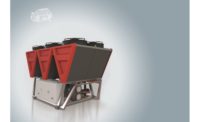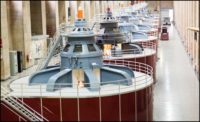Decarbonization of the North America supply-side electrical grid requires that the demand-side market shifts from fossil fuel-source heating boilers and furnaces to electric-driven heat pumps. It calls for the most efficient innovative solutions spanning multiple sectors to drive the required indirect CO₂ emissions reductions. Heating buildings consumes the largest amount of energy and produces the highest CO₂ emissions. So, the focus is on planning for a resilient and efficient system that can provide affordable heat for all. To minimize investments, energy demand must be reduced by applying energy efficiency measures to buildings and optimizing the performance of technical building systems. There is also a need to establish efficient, decarbonized heating supply systems that put a focus on supply-side renewable energy. The nature of a renewable primary energy supply will force the demand and supply sides to become much more integrated. This will in turn call for new applications and technologies like demand-side flexibility and thermal or electrical energy storage. As an example of the potential, in the Heat Roadmap Europe (HRE) studies 1 and 2, it has been shown that increasing district heating to cover 50% of the total heat demand, together with a 40-GW heat pump capacity, can address up to 15% of total heat demand. In periods with a surplus of renewable electricity, heat pumps are supposed to continue operating and use thermal storage to capture excess heat due to unused compressor capacity.
Large-scale heat pumps are estimated to produce 520 TWh/year with a coefficient of performance (COP) of 3 (see figure 2). Such an increase means they can better use alternative sources of heat like ground-source thermal heat and waste heat from data centers. At the same time, they can use intermittent renewable electricity.
While realized COP in cooling systems is important, it might not be considered a primary business factor due to existing business models. However, in heating, the ‘realized’ COP of heat pumps is a primary business factor for district heating (DH) operators. The realized COP depends on some basic factors like temperature lift, as well as the technology behind the heat pump systems.
Temperature lift
Temperature lift is the difference between the temperature of the heat source inlet and the temperature supplied to the DH system outlet. DH grids have developed over the last 130 years, having originated here in the U.S., in New York City. The history of this development, which then mainly shifted over to Europe, can be divided into four generations, each often referred to by generation names like 3G or 4G. The main parameter characterizing the G-level of the system is the flow line temperature. 3G systems have a flow temperature below 212°F (100°C) while new 4G systems will go as low as 104°F (40°C) [4].
As the flow temperature decreases, there are overall system efficiency increases as well as more opportunities to apply decentralized heat sources like heat pumps or waste heat from supermarkets. The first parameter in determining how low the flow temperature can go is the size of the heating surfaces in buildings. For example, large surfaces using floor heating might use 104°F (40°C) water, while old radiators in poorly-insulated buildings will demand 176°F 80°C during cold periods. Low temperature heating is still rare but is expected to grow as old building stock is renovated. For new installations, low-temperature DH is an obvious choice. Specific high-temperature needs will then be handled by dedicated heat pumps.
Another parameter determining the DH flow temperature is the architecture of the DH system. Pipe diameter, distance between heat supply sources, and end consumer density are all important factors in DH system design.
Seasonal variations in heat demand will set the constraints for the flow line temperatures, but the trend is toward lower temperatures, even during winter. Good practice is to lower the temperature until the most demanding heat consumer calls. Then, specific action (such as installing better insulation) can be taken to raise performance for that specific consumer.
Each city has unique opportunities to use large heat sources, like combined heat and power plants, industrial plants, data centers, sea water, etc. This will, of course, be subject to the outline of the DH system and flow temperature, as some heat sources may have higher temperatures than others.
The flow line temperature does not necessarily reflect demand from end consumers, as it can often be based on grid piping constraints or specific heat sources. A lower temperature that ensures sufficient capacity throughout the grid can be obtained by having multiple, decentralized distributed energy sources like heat pumps. Smaller heat pumps can boost flow temperatures for apartments or multi-apartment buildings, while large heat pumps can supply heat to the grid via ground source. Supermarkets have also shown they can deliver extra heat to the DH. This issue has already shown to be an important factor to discuss when planning the introduction of heat pumps to the district heating grid. The lesson is that the necessary temperature lift may often be smaller than the official flow temperature. This is an important parameter to consider when discussing heat pump heat delivery.
Technology behind the low-GWP heat pump systems
Heat pumps larger than 1 MW are often based on well-known ammonia technology. While CO₂ heat pumps can be a good source of high temperature DH, this technology is not common yet.
The HFO refrigerant R1234ze(E) has been introduced to the market over the last few years. Due to its high critical point of 229°F (109.4°C), R1234ze(E) offers very good performance in heating applications. Furthermore, it can be used in centrifugal compressors due to its high molecular weight.
Assuming a temperature lift of 86°-122°F (30°-50°C), two or three stages of compression are normally suitable. However, CO₂ can use counterflow heat exchanger technology and be effective for one-stage compression as well because of its transcritical properties.
A survey [1] shows COP values from 149 large heat pumps installed in the EU with capacities of up to 230 megawatt (MW) and average capacity of 10 MW. Even with a clear trend line seen in Figure 6, one can see a high deviation variance in the COP results. This can be explained by differences in the system architecture, such as on/off duty cycle or variable-speed drive, level of maintenance, etc. As a rule of thumb, the higher the capacity of the system, the higher the efficiency. This is due to these systems having more complexity and optimization procedures. It should be noted that potential future rollout of large ground-source heat pumps would have capacity limits around 5-10 MW and would call for more modular system designs.
System comparison
Thanks to their high compressor RPM and contact-free operation, oil-free air conditioning chillers using centrifugal compressors have strong energy efficiency, a small size, and low noise levels. Even though oil-free systems have not yet been used for large-scale heat pumps, they are remarkable due to their high efficiency, ability to maintain that performance over the product life, and quiet operation. These qualities make them well suited for use in densely populated areas.
To evaluate the efficiency of these systems compared to other low-GWP technologies and refrigerants, we performed some basic simulations comparing CO₂ reciprocating technology and NH3 screw compressor technology with state-of-the-art oil-free systems for heat pumps with an approximate 2-MW capacity. In the future, as research into using tailor-made, low-GWP refrigerant blends suitable for counterflow heat exchangers continues, it’s likely that efficiency will increase [5].
All the systems used an economizer; however, CO₂ and NH₃ systems are more complex due to the need to manage oil. The CO₂ systems evaluated do not use ejectors or parallel compression. The results show system COP values of 3.5-5.4 depending on whether water supply temperatures were 59°F (15°C; high-temperature level ground source) or 79°F (26°C; data center source). The oil-free system shows significant results without as much complexity, making it suitable for large-scale system production.
Conclusion
The energy outlooks call for electrification and ambitious investments in DH networks. Large-scale heat pumps will be necessary to power district heating and adapt to the increasing amount of renewable electricity being generated.
The temperature demands of the district heating grid have decreased continuously over time. It’s anticipated that future DH grids will go as low as 104°F (40°C), allowing for decentralized heat suppliers like supermarkets.
Heat pumps can be introduced effectively on a mass scale as decentralized zero carbon heat suppliers. System simplicity, low noise levels, and refrigerant safety are all important factors that could establish MW-sized pumps within cities.
Heat pumps’ efficiency is also key to delivering affordable heating. By using oil-free heat pump systems, we can ensure heat pumps are efficient, maintain that efficiency, safe, and silent.




